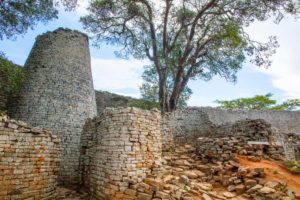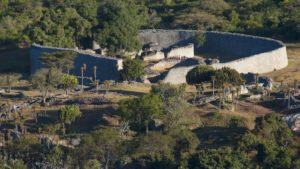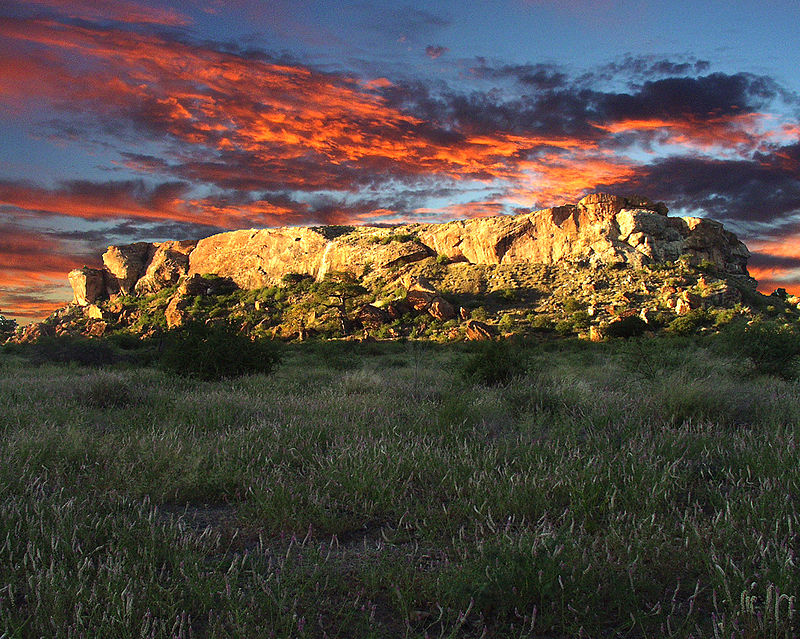A brief exploration of ancient South African civilizations.
Mapungubwe is on the northern border of South Africa, joining Zimbabwe and Botswana, on the convergence of the Limpopo and Shashe Rivers. It was the largest kingdom before it was abandoned in the 14th century. It was the first indigenous kingdom in Southern Africa between 900 and 1300 AD. Its geography enabled it to control trade with East African ports to India and China and their southern African partners. In its hinterlands they harvested gold and ivory and their wealth is displayed by evidence of Chinese porcelain and glass beads. This trade network established an elite class and sacred leadership, with the King being secluded from common people.

The kingdom’s demise was brought about by climate change. Rainfall decreased after 1300 AD and the land could no longer sustain such a high population with traditional farming methods. People dispersed and migrated, their power position switched to Great Zimbabwe. Seven hundred years after the fall of the kingdom, in 1932, a group of white explorers coerced the locals into showing them where the entrance to Mapungubwe hill was. The locals revered the site and wouldn’t even make direct eye contact with the land. The treasure hunters excavated gold artifacts and were planning to loot, when one had a stroke of guilt and decided to submit his findings to the University of Pretoria for archaeological research. These artifacts include the Golden Rhinoceros (shown above), the most well-known artifact of the Mapungubwe kingdom, and is seen as a symbol of the pre-colonial civilization and craftsmanship of South Africa.

The Great Zimbabwe ruins were built and occupied by the Bantu and Shona civilization between the 11th and 15th centuries. They were an important trading center and were built between 1100 and 1450 AD. Granite stone blocks formed enclosures and are accessed by narrow pathways and were considered a royal city- the West wing occupied by Chiefs and the East enclosure for ritual purposes as indicated by famous soapstone birds. The word Zimbabwe consists of two keywords, -mba meaning house and -bwe meaning stone, therefore it means “House of Stone.” The ruins are divided into three major sectors; the Hill complex, the Great Enclosure and the Valley Enclosure. The King lived on the Hill, the King’s wife lived in the Great Enclosure and the common people lived in the Valley, as well as other wives.

The architecture of Great Zimbabwe indicates a complex socio-economic system. The stone walls were constructed to express wealth and power; an elite class of people served a monarchy. There are over 250 similar and smaller Zimbabwes within the country of Great Zimbabwe but none are paralleled to the early city. A few more Zimbabwes are found in Botswana, South Africa and Mozambique. Considering this wide geographical spread and the time span of reign of over three centuries, this civilization is comparable to the Roman and Egyptian civilizations. No single thing took down Great Zimbabwe but some anthropologists speculate if it simply got too large for its environment. Environmental stress due to hunting and overgrazing is one possible outcome.
Bibliography:
Great Zimbabwe National Monument, UNESCO, https://whc.unesco.org/en/list/364.
Mapungubwe Cultural Landscape, UNESCO, https://whc.unesco.org/en/list/1099.
Mapungubwe National Park, South African National Parks, https://www.sanparks.org/parks/mapungubwe/tourism/map.php.
“The Great Zimbabwe Ruins, Victoria Falls Travel Guide, https://www.victoriafalls-guide.net/great-zimbabwe.html.
The Mapungubwe Rhinoceros, Bruno Claessens African Art – Research, Publications, Exhibitions, Auctions, Discoveries, Opinions, Objects,
http://brunoclaessens.com/2015/12/the-mapungubwe-golden-rhinoceros/#.W8aaSmhKiM9.
